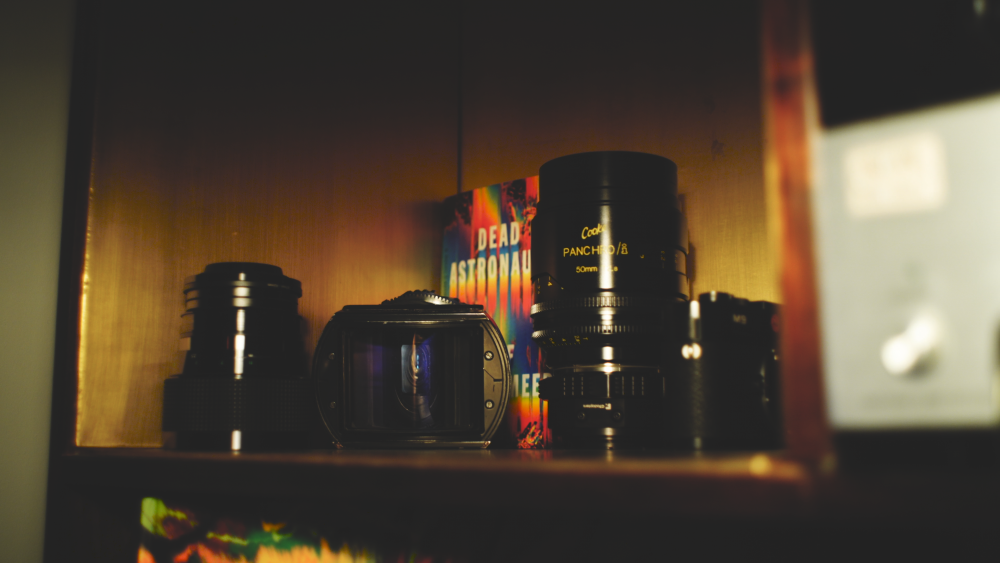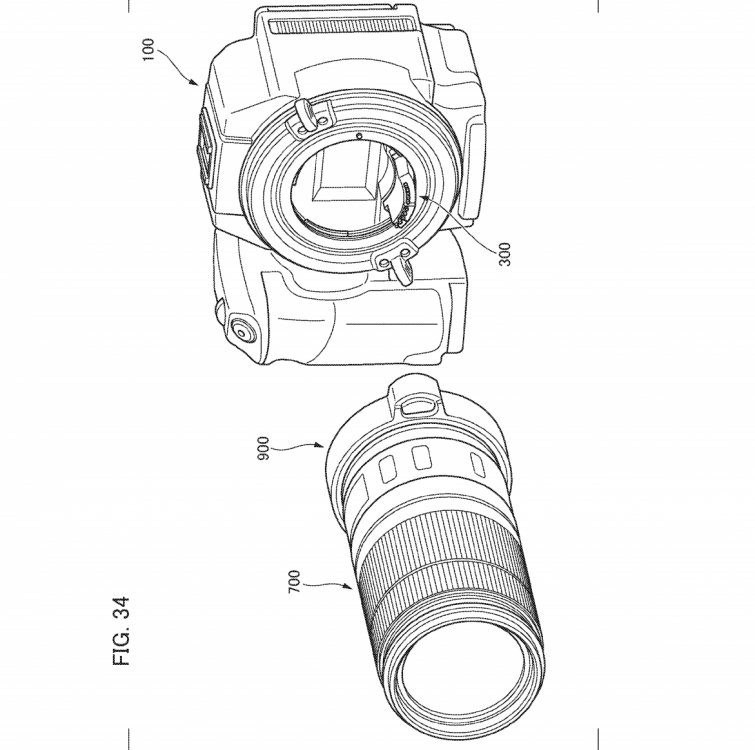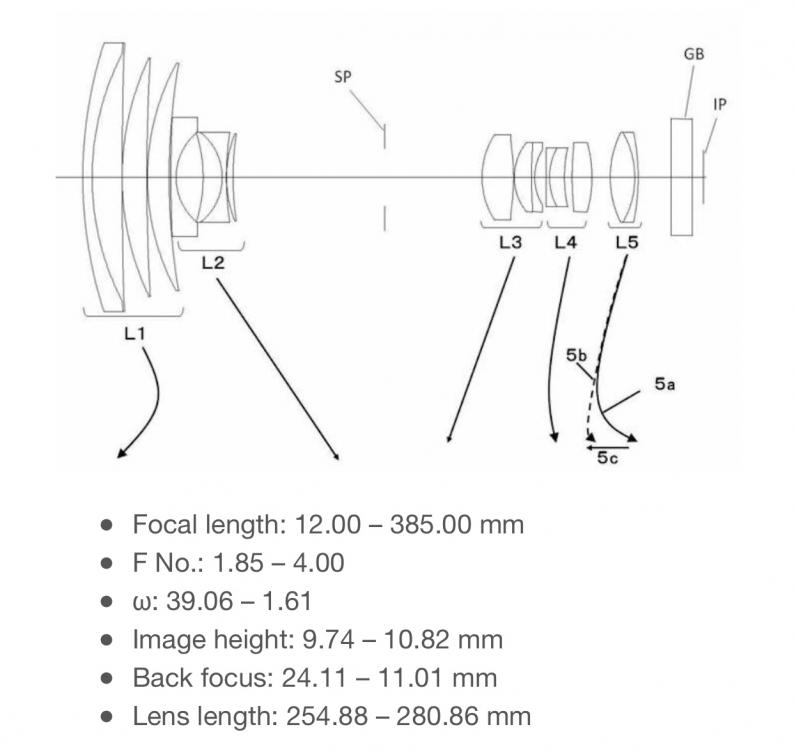
Matt James Smith ?
-
Posts
86 -
Joined
Content Type
Profiles
Forums
Articles
Posts posted by Matt James Smith ?
-
-
On 5/24/2020 at 12:06 AM, BTM_Pix said:
Leica D-LUX/D-LUX7
Leica V-LUX/V-LUX5
Nikon D500
Nikon D5
Panasonic FZ1000/2000/2500
Panasonic LX10/15
It is a camcorder, really, and it's stills mode is abysmal, but it is marketed as a hybrid, does have a dedicated stills mode (and taller sensor in stills mode). It's in a weird category of its own really. While it has a lot of issues, its 4:2:2 305mbps C-log 4K is a bit special IMO: the venerable XC10/XC15!
-
-
2 hours ago, BTM_Pix said:
Yeah its not the full hit but it does give that capability for files at least as I can write an application that does all of the transfer and processing as though it was directly in the camera but does it in such a way that it doesn't interrupt you shooting or have the other limitations that many cameras have when using their own internal WiFi services such as reduced recording resolution or reduced run times etc.
It also means it would work for cameras without any sort of network capability such as BM Pocket, Sigma FP etc
Currently, unless you have one of a limited number of cameras such as my LS300 that take a 4G dongle to directly connect to the internet, you have to use an additional device to tether the camera to anyway so its no additional requirement hardware wise.
Don't get me wrong, it would be ideal if this could be integrated directly in the camera but Sony had their pants pulled down with people making apps for their PlayMemories system that allowed the camera to be hacked so I doubt we'll see it from the major manufacturers so this might be as close as it gets.
For the full integrated solution, the Axiom project probably offers the best hope currently and it does seem to be edging closer
This is a good point about security, actually. For many journalists, privacy is an issue even with current cameras, as files aren’t/can’t be encrypted in camera.
-
2 minutes ago, BTM_Pix said:
You can already somewhat do a lot of this in a roundabout way on any camera by using the Toshiba FlashAir SD cards as your media.
The FlashAir card generates its own WiFi network so can be accessed independently of the camera's own network functionality (if it has one) by apps or even a web browser but can also run custom scripts of its own to automate the process.
So for example, you can lock an image in the camera and this attribute change can be set to be the trigger for the file to be uploaded automatically by FTP to a connected device.
Or an application on a device can run a watchdog to automatically upload any newly created files.
As the files can be accessed while you are generating new ones, you can just concentrate on shooting and all of the file transferring will be happening constantly in the background.
Once you have the data off the card onto the other device (which could be a tablet or phone etc) then it is the apps that you have on there that can then do the functions that you need.
The other device could also be a single board computer like a Raspberry Pi which is a bit more configurable in terms of processing the incoming files to transcode them or process them with adding LUTs etc
If you don't want to store the files on another device but just send them to cloud services then you can also set the card to just work in station mode connected to your phone as a WiFi hotspot and script it to automatically FTP the files to Google Drive, Dropbox etc. if thats all you need.
None of this will give you access to change the internal processing of the camera of course but it will take care of the rest of it and is configurable to the exact needs of each user and is also transferrable between multiple cameras.
Amazing - didn’t know about that. Again though for me it’s about the simplified workflow and potential of 3rd party developers to integrate their own services directly in camera.
-
2 hours ago, KnightsFan said:
I agree!
If you want truly open, the Octopus cinema camera is promising. The Axiom project was promising, but doesn't seem to be going anywhere fast--though I wouldn't be surprised if the Octopus camera is benefiting from the R&D that Axiom did and made open source.
Z Cam cameras are really quite open. There aren't hacks per se, but they don't need any imo. In addition to just having a lot of options out of the box, they have an open API for controlling the camera and really are going out of their way to make their products compatible with third party accessories.
Both of these are strictly cinema cameras. It would be really nice if some manufacturers of hybrids took the same approach. The closest we ever got to an EOS app store was the Samsung Galaxy NX, which is close to just a simple android device shaped like a DSLR. I haven't used one, but it honestly looks like what I'd expect the future of hybrids to be: massive back screen, good ergonomics, and designed for connectivity.
It’s very boring of me, but what I want is for the major manufacturers to get to this point soon. I’m a doc filmmaker so I need the reliability and ease of use of Cinema EOS etc. A sandboxed OS with an App Store like iOS might be limiting in some ways but it ensures 3rd party interventions are safe and accountable. Plus it would mean mainstream developers would get on board. Imagine a Frame.io app that allows you to mark a specific moment in a clip (as you shoot?!) and send it to an editor direct from your camera. A Vimeo app that lets you throw a LUT on log footage and upload. Google drive, Dropbox, WeTransfer. An Instagram app that lets you post direct from the camera. Not to mention the obvious technical possibilities of apps like FilmicPro, a stable Magic Lantern type thing, etc, etc.
-
-
In many ways you’ve got more creative control with an EOSM and Magic Lantern, or an iPhone with FilmicPro, than you have with most ‘professional’ cameras.
Hurry up with the EOS App Store!
-
NX1
-
Not sure why autocorrect put “strongwomen” into my post above. It should’ve just said “strong” 😂
-
Here's the footage I shot (and threw a load of film emulation effects on top of). It's not edited into anything interesting it's just 20min of stuff ... so skim through and find the bits you like.
Some other nice stuff posted here folks - nice to see! The main tips I'd give are:
1. Be aware of the horrific aliasing - tree branches against a bright sky look just horrific. I've added a strongwomen Tiffen Digital Diffusion or HDTVFX filter to the front of the already soft 6mm lens, which suits the consumer 8mm look I'm going for and deals with most of the aliasing. Adding grain in post helps diffuse it too.
2. Rolling shutter. It's awful. Put the strap on the camera and pull it taught around your neck (or use a loupe) to avoid jitters. A pistol grip handle helps too as the EOSM is not an easy camera to hold steady. Then stabilise the footage and correct the rolling shutter in post as best you can (I use Lock & Load).
Here's the vid. I'm pretty pleased with it as a Super 8 simulation.
Pw: S8mm
- PannySVHS, heart0less and mercer
-
 3
3
-
On 9/1/2019 at 11:05 PM, Braydon said:
I love this! Thank you for the setup specs. I do have one questions though. I understand setting everything up in the ML backend...but does it matter what you tell the EOS's software to film in? 1920x30, 1280x60, 640x30, etc? OR does the ML software take precedence and picking a framerate on the EOS itself have no effect?
THANK YOU!
Sorry, didn't get a notification for this and forgot I'd posted here

I made some more EOSM S8 "film" I'll post later.
-
On 12/6/2018 at 12:14 AM, Alpicat said:
Tiffen Digital Diffusion or HDTVFX filters function pretty well as a poor-man’s anti aliasing filter. They also contribute to a more old school film look. You have to hack a filter adapter on to some c mount lenses (I cut a hole in the lens cap and superglued a 37mm to 52mm thread adapter to it!)?
I’ve shot some more Super 8 footage - I’ll try to make a short edit and post it later if I get a chance.
-
I’ve been messing once again with using my EOSM as a Digital Super 8 camera and I’m pretty happy with the results.
For the video below I used the following setup.
6mm f/1.2 Pentax TV lens (paper shim between lens and C mount-EOSM adapter, for infinity focus)
Tiffen Digital Diffusion 5 filter (reduces moire artefacts)
EOSM with latest ML build
18fps override (exact)
5x zoom
12bit lossless RAW
4:3 aspect
1440 x 1080i just used the aperture ring for exposure, rather than ND, as it seemed more authentically consumer Super 8.
This video has effects applied - FilmConvert’s Super 8 grain; FCPX native “aged film” effect applied very sparingly for jitter and a little dust; a telecine’d Super 8 black frame (keyed over footage). If there is interest, I can post the ungraded footage.
-
12 hours ago, Kisaha said:
If the XC10 was an ILC and had a 10 bit codec would be Tier 1 UHD eligible!
The XC10 spits out real 10-bit 422 via HDMI
-
On 26/04/2018 at 11:50 PM, tomsemiterrific said:
Googled a LOT of stuff, but nothing was helpful about FCPX RAW. And Google is not really my friend---or yours.
That link is at the top of page one if you search Canon C200 RAW FCPX.
Install that plugin and you’re away.
Maybe gratitude rather than taking issue?
By the way “RAW” is not a codec in itself - every RAW is different. If you’re talking about the new support for Prores RAW in FCPX, that’s not the RAW the C200 uses.
-
9 hours ago, tomsemiterrific said:
I understand FCPX has been upgraded to edit RAW files.
When I tried RAW from my C200 FCPX crashed.
What is the work flow to edit RAW in FCPX?
Google is your friend, friend.
-
Is anyone else getting pink in blown highlights when shooting RAW on EOSM? I use MlRAWviewer to open and convert to DNG but hilight rolloff is awful and all blown areas get filled with bright, flat pink colour.
-
3 minutes ago, cantsin said:
Canon won't do that - they develop and manufacture their own sensors. It's part of the reason why they are so profitable. (And part of the reason why their camera specs are behind everyone who uses Sony sensors.)
The sensor is likely to be similar to the GH5S though. Like the XC10, the camera may shoot stills but will be highly video oriented, not a true hybrid like the GH5 - therefore it won't be a high megapixel sensor. If it's 12mp like the XC10, but on a M43 sensor, then it'll be very similar. The image out of the XC10 in good light is fantastic so an improvement on that is to be welcomed.
-
11 minutes ago, cantsin said:
The lens have major distortion and vignetting as its design compromises - and rely on in-camera software corrections of these optical flaws.
Yes. This ties into the idea that this lens using this "mount" will be a one-off. Essentially it'll be a Bridge camera like the XC10 with it attached.
-
-
1 hour ago, Andrew Reid said:
The Fujinon E-mount lenses are also very long, I'd say it would be a product along those lines.
10mm-ish corresponds to a Micro Four Thirds sensor cropped to 16:9
In 4:3 they are 17x13mm
I remember when the XC10 was launched Canon was talking about it as "the successor to the camcorder." Perhaps they've decided to invest in the format as a fully-fledged professional ENG alternative/competitor?
-
5 minutes ago, Andrew Reid said:
If that is for a Micro Four Thirds sensor then it's a damn impressive lens spec.
Very high-end optic.
The Olympus 12-100MM F4 remember is the current state of the art zoom for Micro Four Thirds.
This is a F1.85 to F4 and it zooms to 385MM?!
That is equivalent to 24-770mm in full frame terms.
Maybe they are speeding up the aperture with the Speed Booster optic at the back?
I'd be tempted to say it is more like the spec you'd find with a high end Super 16mm lens... But 12mm would be 32mm so not quite wide enough. Would have to be 28mm at least. Unless they are using a 2.4x crop sensor.
Yeah it's just occurred to me since my last comment quite how insane the zoom range is.
I've also just realised the physical size of the lens - 25cm long unextended! That's like putting a lens significantly longer than a 70-200mm on an XC10! I'm now doubting whether it will be the only lens. They would surely have to also offer a more compact lens. Or maybe I'm wrong and it's not for the XC camera.
I can't track down the original patent document. Is an image height of 9.74 -10.82mm consistent with an M43 sensor?
-
Here we go - this has to be it. It’s a 4/3 sensor. The “native” lens is just an evolution of the super-zoom on the XC10 - a bit faster, built for a slightly larger sensor and detachable only so EF lenses can be used with the camera.
My guess is this will be the only lens using this mount and with it attached the XC20 (or whatever it gets called) will function much the same as the XC10. It’ll be a big lens though right?! Also not sure how they’ll integrate an ND filter - will it be built into the lens itself?
One last musing: nutty as a bundled speed booster may seem, it’s actually consistent with Canon’s road map for the XC series. From the start it was Canon’s answer to the BMPCC and GH series (small size, affordable, small sensor, professional image quality) but friendlier to video journalists. The loupe for the LCD screen of the XC10 was their bundled Z-Finder. The only thing it lacked was an interchangeable mount.
This camera will be a direct rival to the new Pocket camera. I doubt it’ll have RAW, but it’ll be the one you can just pick up and shoot with confidence.
-
1 hour ago, Mokara said:
Patent refers to the mounting mechanism, not the body itself. They just used the XC body as an example because they have to use something. The camera that uses the mount (if it is ever made) most likely would have a different body.
I agree the body could be a red herring. But it would be nice if it wasn't ...
3 hours ago, Andrew Reid said:It doesn't look like EOS-M mount from the patent images... It's EF.
Would be nice if it comes to the market, as long as it is Super 35 and less than £2500.
There's a hell of a lot going on in that mount though. It seems like it could be adaptable to EF, EF-S and EF-M. The patent appears to talk about inserting glass in the adapter too. Canon Rumours interpreted this as a teleconverter, but could it be a built-in focal reducer?
What if it's a 1-inch sensor like the XC10 and Canon are building just one or two zooms for that sensor in EF-M mount ... but if you switch to the focal reducer and EF mount you get an effective APSC size sensor. Sounds outlandish I know but the mount is pretty far out already ...





Complete list of 4K cameras for filmmakers
In: Cameras
Posted
I’ve been shooting with mine consistently since 2016. It’s a fantastic camera when you know it’s quirks and limitations. No good for low light or for matching with shallow DOF footage, but the codec is rock solid, it grades beautifully and the colours pop. Slap a bit of film concert on XC10 footage and it looks very S16- like.
The IS is incredible - steady handheld footage at 480mm (in 2x crop mode)! - and it’s form factor is great. Canon Rumors has suggested a few times Xanon is working on an interchangeable lens version. Canon even filed a patent for an XC10 body with a custom speedbooster! Is it possible this will be the first RF-mount cinema camera??